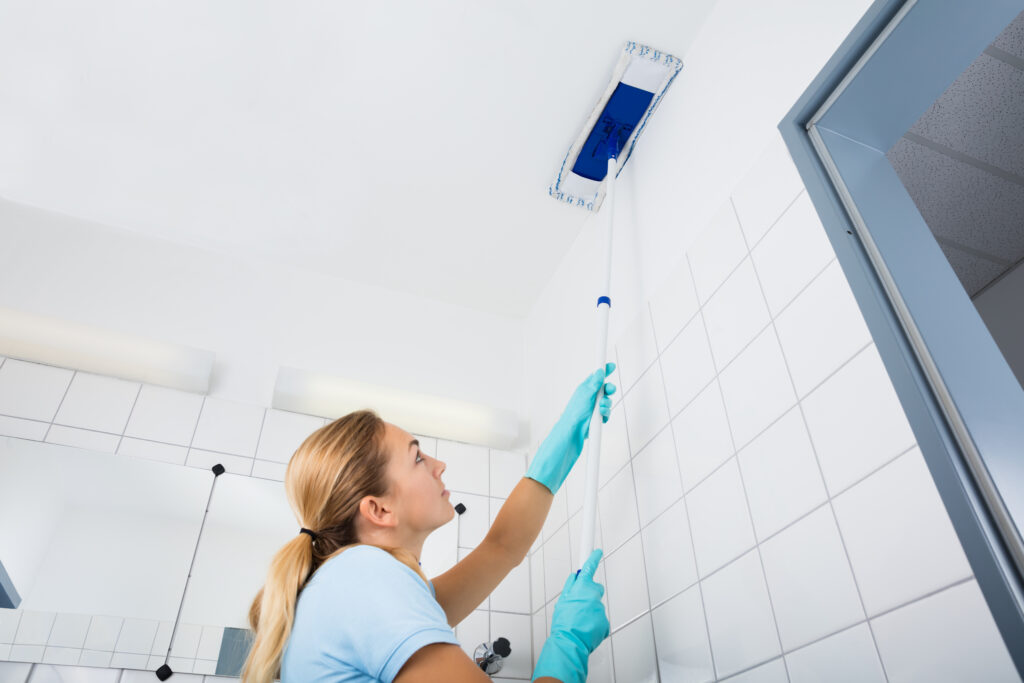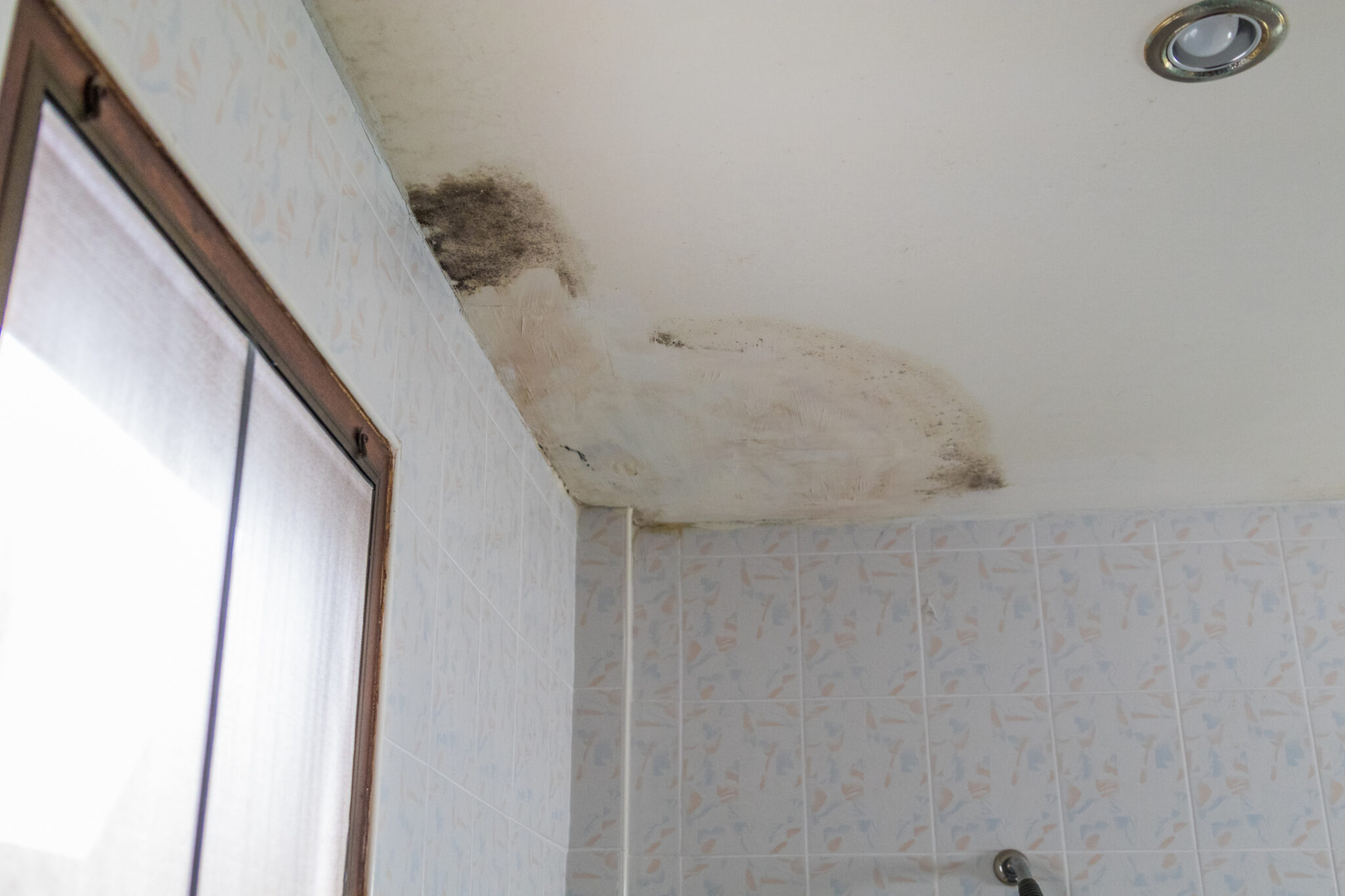Wondering if that mold in your bathroom ceiling is harmful? Mold in ceilings is a common occurrence, but not one you should accept. Ceilings are also an often neglected part of the bathroom when it comes to cleaning, and in this article we cover why they get moldy and why it is a problem.
Why Ceilings get Mold

Ceilings are a common place for mold to grow
Mold spores float around in the air, and can be found everywhere indoors and outdoors. Mold grows in spots that have a high amount of moisture, heat and humidity levels. During the evaporation process, water vapour rises from lower lying surfaces into the air. Without air circulation, this water vapour gets trapped and clings onto surfaces, including ceilings.
Bathrooms where people take hot showers often have mold in ceilings because the hot and humid air rises and has nowhere to escape. Even with open windows and doors, enough moisture can still gather in certain areas and create good conditions for mold problems to occur.
Mold in Bathroom Ceilings is Harmful
Some of the health risks of mould exposure include:
- Runny nose/nasal congestion
- Sneezing
- Coughing
- Wheezing
- Respiratory tract infections (RTIs)
- Worsened asthma and allergic conditions
These are the reasons why mold in bathroom ceilings are harmful and cause you health problems that could keep coming back.
How To Clean Mold in Ceilings

Try using a mop to wipe and dry your ceiling after using your cleaning mixture
Once you notice dark green or black mold growing in your ceiling, clean it immediately to prevent it giving you health problems. The best way to clean mould from your ceiling is with mould remover spray. When carrying out mold removal, always remember to wear eye protection, a mask and gloves. Ventilate your bathroom, opening all available windows and doors, and turning on fans where possible.
The steps:
- Once you have put on your protection gear, spray your mould remover onto the mouldy area of your ceiling. If you don’t have mould cleaner, mix 1 part bleach with 3 parts water in a spray bottle.
- Let liquid sit for 15 minutes or as instructed on the mould remover bottle.
- Scrub the area with a soft to medium brush.
- Wipe the treated surface with a wet cloth until the mold stains are removed.
- Wipe the surface with a dry cloth to help prevent the mold from coming back
If you have large patches of mould over one square metre in size, call a professional mould remover.
How to Prevent Mold in Ceilings
Now that you know that mold in bathroom ceilings is harmful and how to clean it, here is how to prevent it coming back.
Better Ventilation

Install a bathroom fan for better ventilation and less mold
Increase the ventilation in your bathroom to help prevent mold in your ceilings. Simple steps include opening all windows and doors, especially after hot showers. Exhaust fans are another great option, as they pull the air and moisture from your bathroom and vent it out of your home. There are a few different types of bathroom exhaust fans, each with their own unique benefits.
Regular Cleaning
Crucial to keeping your bathroom ceiling clean from mold growth is to do routine cleaning. Clean the entire ceiling, paying special attention to previous areas where black mold previously grew. This will prevent mold spores from growing and causing you health issues associated with it.
Prevent Mold in your Ceiling!
Mold in bathroom ceilings are harmful, and once you notice the mold, take action to clean it and prevent it. Mold can cause you to have constant respiratory problems like sneezing, coughing or worsen your asthma. Keep your bathroom well vented and do regular cleaning to stop the mold in its tracks! Head to the MyHomeware Blog for more information on everything from bathroom cleaning to decorating and renovations today!





